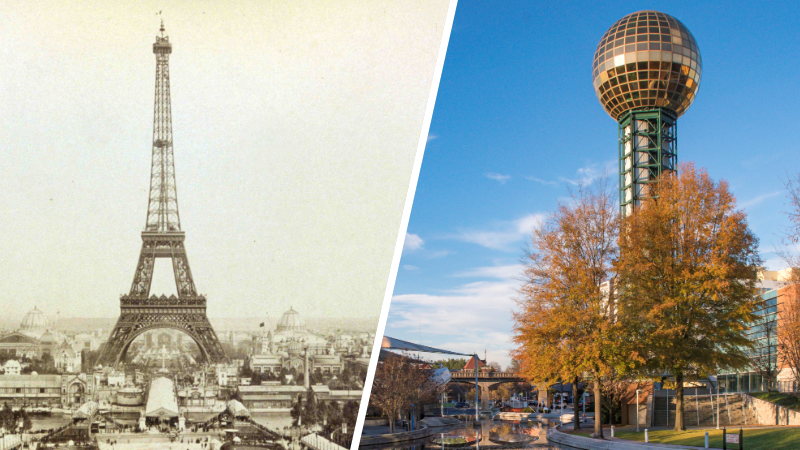What do cherry Coke, the Eiffel Tower, and color television all have in common? They’re just a few of the beloved innovations which debuted at a world’s fair. For more than a century, the world’s fairs acted as sites to showcase inventions and cultural achievements with many millions of attendees flocking to the host cities.
Videos by Rare
So why did the grand tradition die out?
Industrialization
The tradition of world’s fairs technically began in Prague in 1791, but it was London’s expo — “The Great Exhibition of the Works of Industry of All Nations” — which cemented the affair’s magnificent, international reputation. Held in 1851, the event kicked off what’s now known as first era of world’s fairs: industrialization.
Held every few years, roughly, until the 1940s, expos during the era of industrialization highlighted, above all, the evolution of science, technology, and architecture. And each was planned on a massive scale to draw hoards of impressed tourists.
Notable fairs during this time include the Exposition Universelle of 1889 in Paris, which unveiled the city’s beloved Eiffel Tower and theWorld’s Columbian Exposition in Chicago in 1893. Presenting Chicago as a prime example of the emergent City Beautiful movement, the fair showcased the area’s rebuilding after the Great Chicago Fire — and offered visitors rides on the first-ever Ferris wheel.
Other famous inventions which debuted duringthe industrial world’s fairs include the telephone, the moving walkway, the third rail, electric streetlights, and the X-ray machine.
Many foods which remain modern favorites were also popularized at these early expos: brownies, Cream of Wheat, Hershey chocolate, Juicy Fruit gum, Quaker Oats, Pabst Blue Ribbon beer, Aunt Jemima pancake mix, Cracker Jacks, Vienna sausage, Heinz ketchup, and, of course, cherry Coke.
Cultural Exchange
In 1939, the New York’s World Fair marked a turning point for the tradition, pivoting its focus to social progress. “Building the world of tomorrow” was the official theme and worldwide participation was an original tenet. However, as the fair’s year-plus run coincided with the lead up to World War II, European pavilions became sites of both tension and nationalistic displays.
Around the 60s, the fairs also came to embrace the space age futurism which had become such a dominant, mid-century aesthetic. In 1962, the Space Needle was presented at Seattle’s Century 21 Exposition. And three years later, another World’s Fair set in New York featured colored TV: perhaps that decade’s most fabulous innovation.
These types of fairs, centered around optimistic cultural themes, continued until 1988. It was then, beginning with the expo in Brisbane, that emphasis would shift once again.
The Fall of the World’s Fair — in America
Technically, world’s fairs are still a thing. Now split into two types, World Expos and Specialized Expos, each takes place every five years. But the United States participation is so lackluster, most Americans don’t even realize it!
Starting with the 1988 World Expo in Brisbane, world fairs became a more explicit platform for nation branding. Though participating countries had long tried boosting their own image through themed pavillions, it soon became the premise of the entire fair.
But after the fall of the Soviet Union in 1991, and the subsequent end of the Cold War, the United States drastically cut the funding for its own pavilions. No longer needing to project an image of stately superpower, in 1998, congress formally abolished the United States Information Agency which oversaw all expo participation.
Later, during the George W. Bush administration, federal funding was cut entirely from the U.S. pavillions, leaving the exhibits to be outsourced — to national corporations.
This was especially apparent at the Shanghai expo in 2010 where the American pavilion became infamous for its overbearing blend of corporate logos. At the time, even Secretary of State Hilary Clinton called the underwhelming spectacle, simply, “fine” when pressed by reporters.
Unwilling to invest, then, it’s unsurprising that America has not hosted an expo since 1984. The 2019 documentary Face of a Nation charts this national decline interest in greater detail and is available to watch here.



